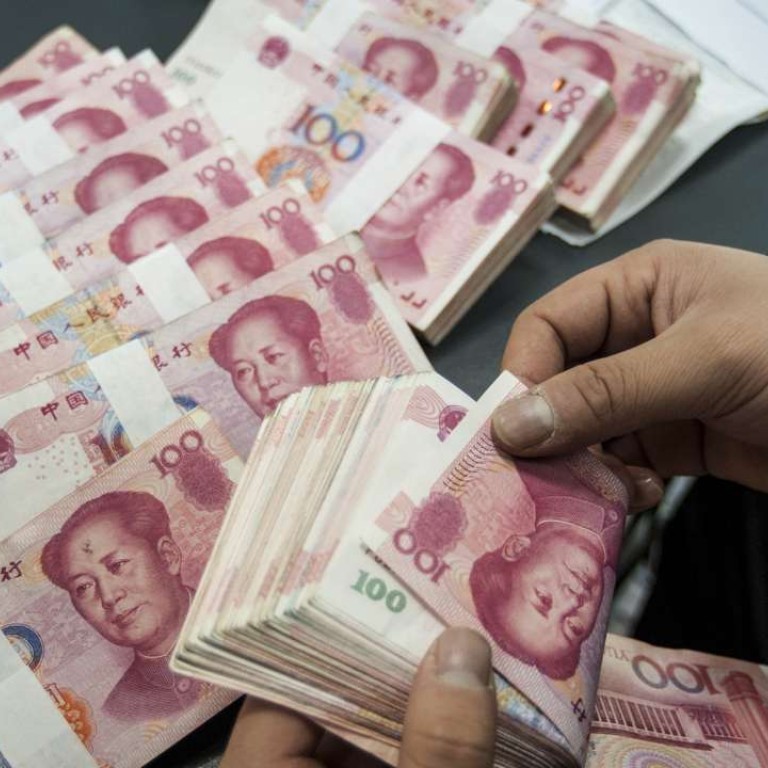
Don’t expect a U-turn in the yuan’s downtrend, but pace of depreciation likely to soften, traders say
The yuan, now trading at an eight-year low, is expected to continue trending lower
The latest restrictions over capital outflows from China should be seen as Beijing’s intention to tap the brakes on the pace of yuan depreciation, rather than drawing a line in the sand for a defence of the currency, according to experts.
As the latest move to control capital outflows from China, the central bank will curb the amount of yuan that Chinese companies can remit outside the country, imposing a cap for the first time in more than two decades to stem the yuan’s outflow as the currency plumbs daily lows.
Analysts said this announcement along with other recent restrictions are intended to help calm market and ensure an orderly pace of adjustment in the currency.
“The intervention by the authority is aimed to slow down the pace of the yuan’s weakening, instead of changing its direction, ” said Hong Hao, managing director and chief strategist at Bocom International in Hong Kong.
The restriction comes amid sharp depreciation of the yuan recently. The onshore yuan in Shanghai weakened by 0.1 per cent on Thursday after the central bank cut the daily reference rate by 93 basis point to 6.8958 per US dollar.
The yuan has weakened by more than 7 per cent in the past year and by more than 4 per cent since the Golden Week holiday in October.
The currency was thrown into a renewed round of sharp depreciation against the US dollar after Donald Trump won the US presidential election on November 8, which strengthened expectations of higher inflation in the US and a faster pace of interest rate hikes by the Federal Reserve.
The depreciation of the yuan accelerated last week, highlighted by a 0.6 per cent drop in offshore yuan to hit 6.9568 per US dollar on November 23rd, while the onshore yuan hit 6.9270 per US dollar the following day, prompting a PBOC official to make public speech to support the currency.
Central bank Deputy Governor Yi Gang said in an interview with Xinhua that the yuan is a “stable and strong” currency and its depreciation against the dollar was less than that of the Japanese yen or the euro.
It was widely speculated among traders that Chinese state banks, following the speech, intervened the foreign exchange markets by dumping US dollars to support the yuan.
Earlier this month, the central bank required commercial banks to stop issuing double-network payment cards. Meanwhile, China’s biggest bank card provider UnionPay decided to tighten regulations over how mainland customers can use its debit and credit cards to purchase investment-linked insurance products in Hong Kong, amid concerns that it had become a channel through which yuan was leaking across the border.
In addition, the foreign exchange regulator lowered the required the threshold for reporting overseas investments to one-tenth of its prior level. Where in the past foreign direct investment associated foreign exchange transfers of greater than US$50 million had to be reported, the new reporting limit has been cut to US$5 million.
In spite of these measures, the market is still dominated by expectations of continued depreciation.
In regards to equilibrium value, Hong said “it’s at least 7.5 per US dollar and could be even weaker.”
“Traders are tactically buying on dips as the US dollar’s bull trend remains intact,” said Stephen Innes, senior trader at OANDA.
“US interest rate yields are moving higher, so expect the yuan and the emerging market currency sell-off to intensify,” Innes said.
